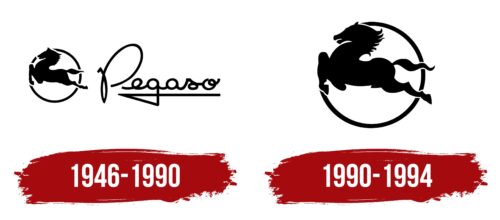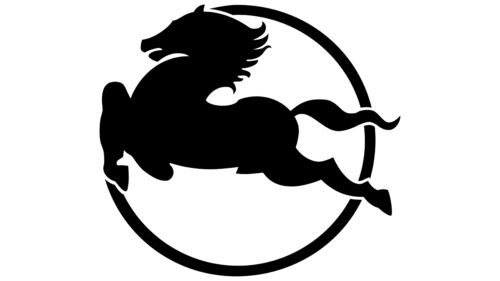The Pegaso logo reflects the spirit of innovation, as this brand has always strived for excellence. The emblem conveys elegance, speed, power, and strength—qualities characteristic of the Spanish manufacturer’s vehicles. Symbolic images emphasize dynamism, associating it with continuous forward movement.
Pegaso: Brand overview
In 1946, in the vibrant city of Barcelona, the birth of a new brand set the stage for a new chapter in Spain’s automotive history. Under the guidance of engineer Wifredo Ricart, this enterprise aimed to rejuvenate the country’s post-World War II automotive industry.
The following year, 1947, marked the debut of the brand’s first truck, the Pegaso I. Rooted in pre-war Hispano-Suiza designs, this vehicle highlighted the company’s initial commitment to commercial vehicles. The real showstopper arrived in 1951, when the brand unveiled the Z-102 sports car at the Paris Motor Show, showcasing its engineering prowess on an international platform.
The Z-102 wasn’t just about looks. 1953, it shattered world speed records for production cars, hitting an astounding 243 km/h. Building on this momentum, the Z-103 hit the scene in 1954 as an enhanced successor. Despite these achievements, by 1956, the brand focused exclusively on commercial vehicles, essential for Spain’s economic revival.
The 1961 release of the Comet series trucks marked a significant growth spurt for the brand. This success continued with the 1968 introduction of the 2011/50 heavy trucks, cementing the brand’s stronghold in the heavy vehicle sector.
The 1970s brought further innovation. In 1972, the brand joined forces with DAF to produce light trucks. The 1975 Tecno series expanded its commercial vehicle lineup, highlighting its adaptability and forward-thinking.
The 1980s saw the debut of the modernized Troner series in 1983. By 1987, a collaboration with MAN SE led to the development of advanced new engines, marking a significant technological leap.
The 1990 brand acquisition by an Italian company, IVECO, began the final chapter of the brand. By 1994, the brand had fully integrated into the new company’s operations, ending its journey as a standalone brand.
The brand was celebrated for its trucks, buses, and a brief yet memorable stint in sports cars.
Meaning and History
What is Pegaso?
It is a Spanish automobile brand known for producing a wide range of vehicles including trucks, buses and sports cars. Founded by the state-owned ENASA, the company has become renowned for its engineering prowess and innovation. The brand’s sports cars, such as the Z-102, were renowned for their advanced technology and high performance.
1946 – 1990
The Pegaso brand is named after the mythical creature resembling a winged horse, so its logo features the silhouette of a horse. The artists did not capture the true grandeur of Pegasus; instead, they created the likeness of a circus horse jumping through a ring. Despite this, it embodies strength, inspiration, and freedom, showcasing the company’s pursuit of excellence.
Even without wings, the horse appears to be flying, captured in a moment of movement. Its pose emphasizes speed and power, associating it with the high performance of Pegaso’s tractors, buses, and trucks. The animal’s grace reflects the appealing design of the vehicles.
The horse is placed within a ring, symbolizing reliability and stability. Its circular shape represents constancy, infinity, and cyclicality. The ring can also signify a wheel directly related to automobile manufacturing. By combining the stylized wheel and the leaping horse, the company demonstrated its creative approach to everything it does.
Next to the emblem is the brand name, reflecting its free-spirited and rebellious nature. The wordmark is crafted in a light, handwritten font with round letters featuring decorative loops. The retro style emphasizes Pegaso’s rich historical heritage, evoking associations with longevity and authenticity. Although this design reduces the legibility of the inscription, it has kept the company recognizable for decades.
The name is underlined by a long horizontal stripe extending from the “g.” This highlights the brand name, making it more noticeable and memorable. The straight line also symbolizes the stability and resilience of the vehicle manufacturer.
The logo uses a classic color scheme: black and white. This combination characterizes Pegaso as a solid and authoritative company, as black is traditionally associated with luxury, elegance, and high quality, while white creates a sense of purity and clarity. The contrasting colors make the emblem sharp and visually clear, even with the hard-to-read font.
1990 – 1994
As a manufacturer of buses, trucks, sports cars, and tractors, Pegaso prefers a versatile graphic symbol that is not tied to any specific type of transport. Therefore, in the 1990s, it continued to use the image of a flying horse, initially intended to represent Pegasus, but for some reason, it lost its wings.
Designers altered the animal’s silhouette, adding more bulging muscles, lengthening the flowing mane, and enlarging the open mouth. This emphasized the horse’s strength and aggression, making it look like a heavyweight Mustang rather than a light and flying creature. This allegorical image represents Pegaso’s heavy-duty vehicles, capable of handling any challenges and transporting even the heaviest loads.
However, the elegant form of the horse was preserved, reflecting the company’s inclination toward graceful design. The ring in the background also remained, visually enclosing the emblem and creating a sense of balance. Only one fragment near the animal’s head was removed to avoid unwanted associations. The horse boldly and proudly breaks free from the circle, symbolizing freedom, determination, and high speed.
The inscription was removed because the image of the flying horse became closely associated with the brand and no longer needed additional elements. Even without seeing the company name, people knew exactly who the logo belonged to.






